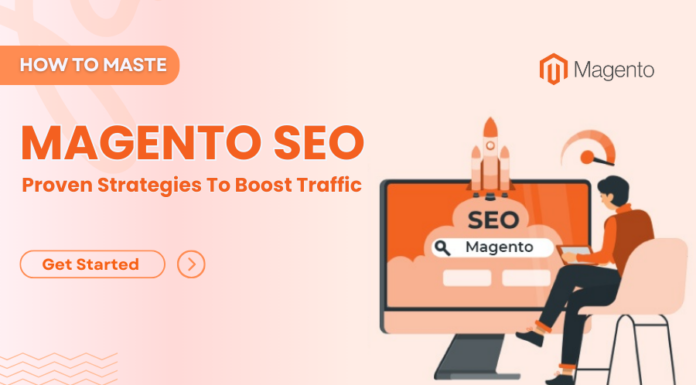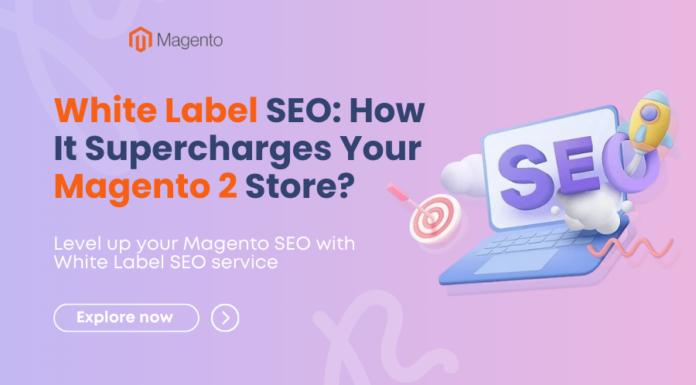
When it comes to SEO potential, Magento is not behind WordPress in any conceivable way. This is a good thing, as well, seeing as how an e-commerce site lives and dies by its traffic.
Magento allows you to customize anchor text, use unique canonical URLs, make amazing XML sitemaps, and even customize page titles and H1 tags. All of these are necessary to optimize your pages for SEO.
On top of that, Magento is fast and offers a lot of extensions that can make your website load even faster. Sure, the loading speed is no longer as big of an SEO factor, but it does affect things like your bounce rate and your overall user satisfaction (both of which are major in this regard).
Now, just because you have the potential to make your Magento strategy work doesn’t mean that you’ll use it or take advantage of it. For this, you need the right SEO strategies to start things on the right foot. Here are some suggestions.
Table of Contents
Best SEO strategies for Magento websites
Without further ado, let’s check out the most effective SEO strategies to boost your Magento store this year.
1. Start with the speed
In the past, loading time served as a great tiebreak. If two sites had the same performance in all the other SEO metrics, the site with a greater speed would be rewarded with the higher rank.
Even then, everyone misunderstood this metric. In their minds, the slower site was penalized, but this was really not the case. The faster site was rewarded, and while this seems like a discussion about the semantics, this is an important distinction.

Today, the majority of sites are fast, and the algorithm no longer uses a metric so crude to determine who gets a higher rank. Sure, a faster site deserves a reward, but what if the loading time difference is measured in microseconds? A human consciousness cannot tell this difference apart, which is why using it as a determining factor isn’t necessarily fair.
Still, a slow-loading site diminishes user experience and increases your bounce rate (if it fails to load in three seconds, the majority of your audience will just leave). Besides, it’s worth having a fast-loading website — you didn’t make your custom logo designs, visuals, and other branding elements in vain, you made them to be enjoyed and memorized by new users.
Still, how do you do it?
Well, the best way is to minify your code, optimize images, and conduct a TTFB audit. Generally speaking, there are so many ways to improve the speed on Magento 2, ranging from lowering the page weight, all the way to setting up Varnish.
2. Use robot.txt
With the use of robot.txt files, you have a unique way of telling search engine robots which URLs they can and should check out. This helps you restrict access to the pages that are not ready and only allow access to those parts of your site that you consider both complete and good enough to represent your online presence.

You don’t want the crawlers to penetrate the sites that you don’t believe are ready since this could seriously diminish your overall online standings.
At the same time, one of the big mistakes that people make when optimizing for SEO is forgetting to remove robot.txt and allowing crawlers back in. This way, you can be left wondering why the page was never indexed when, in reality, you restricted the access yourself. Always double-check, and if you’re ever doing this, make sure to check if you’ve allowed the access back on.
3. Make an XML sitemap
How does a spectator who has just tuned in know which player plays on which team? It’s easy; they’re all wearing matching jerseys. Even at first glance, you can just look at the color on the jersey and know exactly what team they’re on.
This is why you make a sitemap. This way, you’re signaling to the search engine which of the pages are yours and which pages belong to the same domain. It will make it so much easier for the crawlers and bots to understand the relationship between your pages.

This can increase the speed at which you’re being indexed and minimize the chance that you’ll not be indexed. If you’re not indexed already, for whatever reason, this is a great way to get a second chance.
Now, one problem that you may face is the fact that, unlike Magento 1, Magento 2 still doesn’t support auto-generated XML maps. This means that you’ll have to rely on third-party plugins. Fortunately, there are a lot of third-party plugins that will do a great job.
4. Do a great keyword research
It’s important that you understand that some things don’t change based on your CMS. WordPress or Magento, you still need proper keyword research. These keywords will be optimized for search, and they’ll be integrated into all of your pages.
There are so many things you need to address here.
First, you need to understand what makes a great keyword. A good keyword is easier to define by considering more than one factor. For instance, a good keyword has a great search volume, but it also has low competitiveness. What good is it that a lot of people want to know about the subject if all your competitors are trying to rank for that particular keyword?

Then, there’s the issue of complexity and potential for effective long-tail keyword-making.
All of this requires experience on the part of the marketer, as well as decent keyword research tools. Using these tools is important, especially because it helps you tell the difference between what people are looking for and what you believe people are looking for.
Identifying these keywords and integrating them into your content will help you figure out the best way to drive more traffic your way. High traffic and high conversion rates both depend on a well-done SEO job. Coincidentally, these are also some of the most important things for your conversion rates.
5. Focus on the quality of content
Keep in mind that the low-quality content will hurt your SEO rank in so many different ways.
First, it will reduce the average page visit duration. This means that people will see that your content is of low quality, that the context is not relevant to them, or that the post is just not insightful. The worse the content is, the sooner they’ll leave.
Now, one of the big problems with this low quality of content is that it transfers to your business as a whole. If your content is spammy, fluffy, and of low quality, this is exactly what they’ll expect from the rest of your business (products and services).
To ensure your content reflects the high standards your audience expects, consider partnering with a reputable B2B marketing company that creates valuable and engaging content. This approach enhances your SEO rank and positively influences the perception of your business’s overall quality.

Also, make sure that your content is findable. This means that you need to do the right on-site optimization for every single piece that you create.
Most importantly, you need to understand your audience. You can’t provide valuable content if you don’t understand the type of value your audience is expecting. The key thing to creating engaging content lies in figuring out who your audience is and what else they are immersed in or entertained by.
This is where expertise from travel marketing agencies becomes invaluable, as they specialize in pinpointing the interests and needs of potential travelers. By leveraging their insights, you’re more equipped to craft stories and experiences that resonate deeply with your target demographic.
This is why installing extensions that analyze your audience and gather information might be the most sensible approach.
Wrap up
Visibility is the key to making it in eCommerce. With so many competitors offering similar products at similar (even competitive prices), one of your best bets is that you’ll be the first impulse purchase for your audience. Even if they do compare a few vendors, they’ll compare the ones they can actually find, not those hidden at the bottom of SERPs. So, learn how to make your Magento website rank as best as you can.












![[SALE OFF] Discount 30% All Premium Extensions On Christmas And New Year 2025 christmas-and-new-year-2025](https://landofcoder.b-cdn.net/wp-content/uploads/2024/12/christmas-and-new-year-2025-1-218x150.png)






